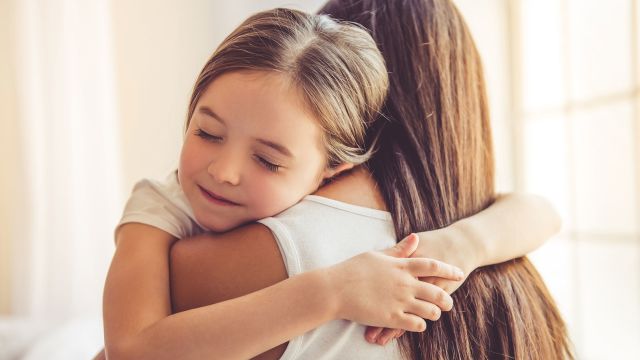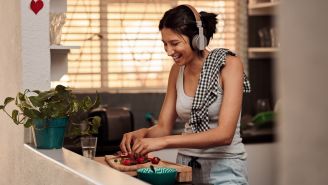Updated on July 27, 2020.
Once schools closed in the spring of 2020 to stem the spread of COVID-19, children no longer played together during recess, learned side by side in the classroom or ate lunch with each other—all experiences essential to their emotional development and well-being. In the United States, many school districts have already announced learning will again be online-only in the fall. This may be particularly hard on younger students and those with special needs who may struggle more with e-learning and need more supervision.
But having to learn virtually from a distance isn’t the only factor affecting young people’s mental health. Kids are lacking the comfort of their normal routines and the support of their peers. They’re missing camps, sports, playdates, trips to bustling parks or pools—and sleepovers at their grandparents’ homes. Some kids may be worried about loved ones getting infected, particularly if their parents are essential workers.
For some children and teens, these and other near-term disruptions of the pandemic could have lasting effects on their emotional health.
Social isolation can take a toll
Children who experience loneliness and isolation could be more likely to develop depression and other mental health problems, according to a June review of 63 studies published in the Journal of the American Academy of Child & Adolescent Psychiatry. Researchers found that loneliness was associated with mental health problems up to nine years later, with longer periods of loneliness serving as more reliable indicators of future mental health issues.
This summer, Nora Hanna, MD, a board-certified child and adolescent psychiatrist outside Atlanta, Georgia, has seen a rise in the number of kids with symptoms of depression seeking her help. “The referrals are picking up,” Dr. Hanna says. “Kids are feeling increasingly sad, depressed and isolated.”
Overall, the pandemic and staying at home has had a negative impact, she adds. “There are very few kids flourishing right now.”
Yet, in general, most kids are resilient, Hanna points out, noting that even if many schools remain virtual in the fall, the majority of children should be okay in the long run. “It will be really tough in the beginning, though, because kids really need a social outlet for their own emotional growth,” she says.
Children with a history of anxiety or depression or those who have a family member with a major mental health issue may be at greater risk for mental health concerns, Hanna adds. “I wonder, could this be the traumatic experience that makes a condition manifest itself?” she says. “The more vulnerable and less resilient the kid is, the harder it’s going to be.”
How to help your child
Many people feel powerless amid the global health crisis, but there are ways that parents and caregivers can help support children who feel isolated, scared or simply out of sorts.
Life has its ups and downs—there is no getting around that. But parents can help boost their children’s resilience in order to help them navigate difficult situations, including the pandemic.
The first step is to regularly check in with kids so you’re better able to recognize changes in their behavior and signs of stress, anxiety or symptoms of depression.
Some other ways parents and caregivers can help children cope:
Model positivity and resilience. Practice self-care and make sure you’re managing your own stress and worry so that kids aren’t picking up on these negative cues, advises Hanna. It may be tough to remain optimistic when you’re worried about work, money and health risks but it’s important to find ways to boost your resilience—for your own sake as well as your children’s.
Kids, to some extent, mirror their parents’ behavior, Hanna explains. “If parents are not resilient, if they’re broken down by this, those kids do worse,” she cautions. “Kids that are getting positive messages from their parents are doing better.
Of course, parents have a right to their emotions and should share them. But “you don’t need to share the big emotions with your kids,” Hanna notes. Save overwhelming emotions like anger or fear to discuss with another adult after the kids go to bed.
Consider physically distant get-togethers. While experts recommended keeping 6 feet of distance between yourself and others and wearing a mask to slow the spread of COVID-19, that doesn’t mean kids can’t get together in a safe way.
Outdoors is better than indoors because viral droplets are more effectively dispersed outside. If your children can socialize while being physically distant, seeing friends that way could help lift their spirits.
Hanna lets her son play Pokémon with a friend. Each child has their own set of cards and sits outside in a park 10 feet away from each other. “I also let my daughter sit outside in my backyard 10 to 12 feet away from a friend for an hour while they have lunch,” she says.
“I am a staunch believer in only leaving the house when it’s necessary and wearing masks everywhere we go,” Hanna stresses. She points out, however, that this socially distant play date is just a small way of allowing the kids to maintain real life personal connections.
Lean on technology. Encouraging kids to speak with friends on the phone or online can also help them feel less isolated. Some kids who used Microsoft Teams during the school year could continue to visit with friends during the summer using this or other instant messaging platforms. Kids could also FaceTime a friend and plan an activity to do together virtually. For example, kids might choose a recipe to cook and make it together during a video call. Hanna cautions, however, that parents should supervise online interactions, especially with younger kids.
Make your home a safe haven. Creating a home environment that helps children feel safe and free to express their emotions is another way to help children become more resilient. Kids may feel more comfortable talking openly if there is an established common area where family members share time together.
Shift the focus to others. One of the best antidotes to feeling helpless is taking action to make the world a better place by volunteering, either virtually or in person. Kids can make a difference, too. Helping children realize that they can play a role in aiding others during the pandemic can give them a sense of purpose when things seem so uncertain. The Corporation for National and Community Service has more information on volunteering opportunities for children.
Choose your battles. Like adults, kids are facing disruptions to their routines and uncertainty about what to expect in the weeks and months ahead. It’s okay to let certain things slide at home, Hanna recommends. “It’s an unprecedented event for modern times,” she says. “Kids have to be given a little more grace. Everybody does right now.” Pick your battles.
While in normal times you might expect your kids to keep their rooms tidy and put away laundry daily, now if a few days pass before they do it, let that go. “It’s not the end of the world,” says Hanna. “Kids are already struggling with being so isolated.”
Keep a close eye. If you’re like many parents still working from home while also juggling kids, it’s hard to keep track of what your kids are doing all day, especially if they’re older and more independent. But it’s important to watch for signs of stress or changes in behavior. Red flags to watch for include avoiding activities they once enjoyed, excessive crying in young kids, unexplained pain or extreme sadness, irritability, trouble concentrating or changes in eating or sleeping habits, according to the Centers for Disease Control and Prevention (CDC).
Hanna looks out for debilitating symptoms or ones that last for days. Is your child sad and hiding in his or her room but able to be coaxed out? Or, is your child affected more deeply and sitting alone for three days. When you’re interacting with your kids, encourage them to stay active. The CDC suggests taking a family walk or bike ride. Even stretching or dancing indoors can help kids cope.
Other tips to help restore a sense of calm at home and support kids’ emotional well-being:
- Reach out to loved ones. Kids may be missing grandparents or other relatives they can’t socialize with as they normally would. They may also worry about those who live alone who may be at higher risk for COVID-19-related complications. FaceTime, Zoom or other video conferencing platforms can help kids stay connected from a distance and feel less anxious about their loved ones’ well-being.
- Give kids a heads up if you’re going out. Older children may be fine to stay at home alone for a short time. But during this stressful time, a clear reminder when you’re leaving and when you’ll be back can help ease anxious minds.
- Try to provide some structure or daily routine. Try to maintain consistent bedtimes or other predictable activities that children can count on from one day to the next. This can help offset lingering uncertainty and other pandemic-related disruptions to their daily lives.
- Show some extra love. Parents don’t need a reason to show their children affection, but some extra hugs and reassuring words—even for older kids—may be even more welcome during the pandemic.
It’s okay to seek help
Kids’ brains are still elastic and developing, and Hanna anticipates that most will likely emerge from the pandemic unscathed when it comes to long-term mental health. But many kids and families could still be assisted by therapy that explores how to navigate these challenging times.
“Anyone can probably benefit from that,” Hanna says, “even outside of the pandemic.”






